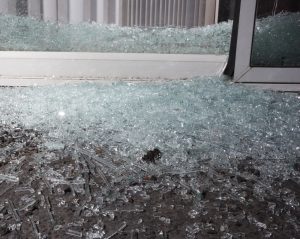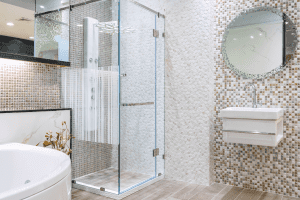Plywood can be an excellent option to create a door. Different plywood options carry varying features and characteristics. So what is the best plywood for you to use in making your door? We consulted with different experts in woodworking, and here’s the answer.
Boiling Waterproof Plywood is ideal for both interior and exterior use, whereas Boiling Water-Resistant Plywood is better for making interior doors. Take note, however, that preferences and requirements play significant factors in making sound purchasing decisions.
Understanding the different types, features, and properties of the various plywood options can make purchasing decisions easy. Some of the things to know include plywood options for making flush doors and the difference between buying stained and non-stained options. Keep reading as we tackle this topic in greater detail.
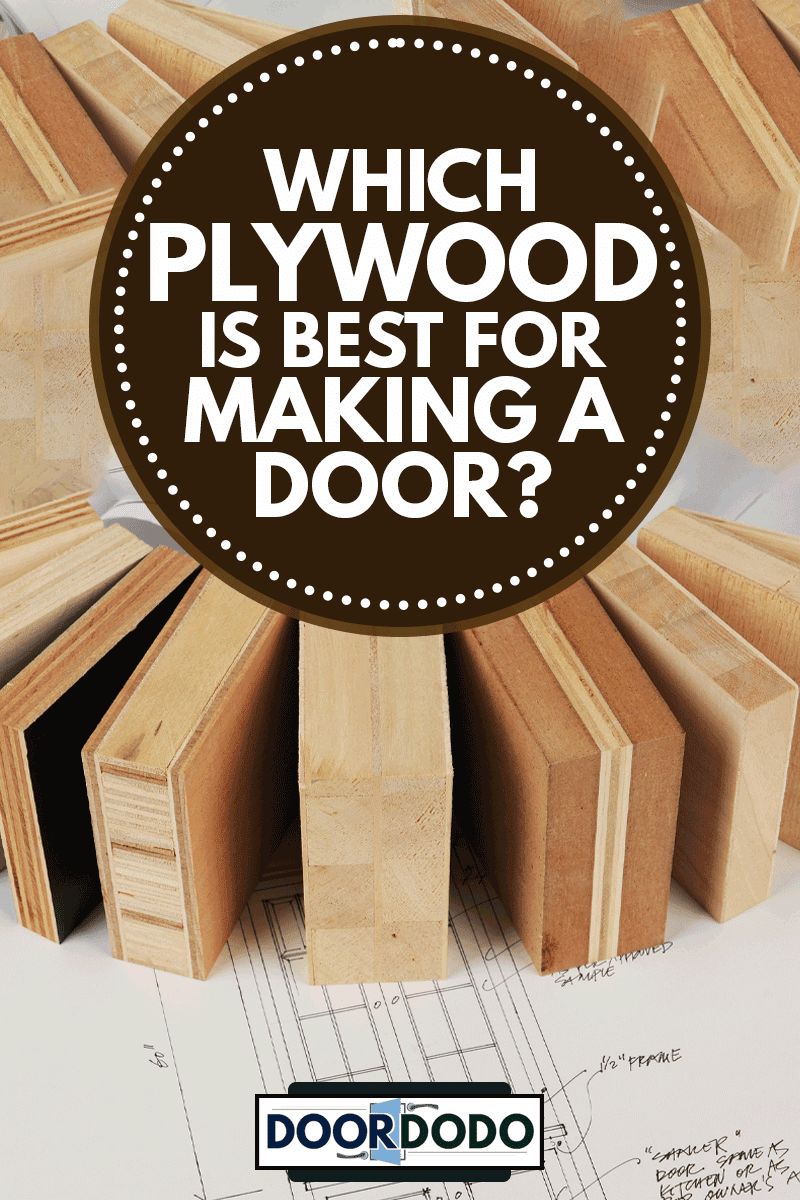
Can I Use Plywood As A Door?
Plywood can be used to create doors. But different types of plywood produce varying finishes. For instance, creating flush doors can use three certain plywood options, which include:
- Boiling Waterproof (BWP) Plywood: Chemically treated to protect against cracks, shrinkage, and warping. BWP plywood is great for interior and exterior doors but is generally quite expensive.
- Boiling Water-Resistant (BWR) Plywood: Warp-resistant, even when exposed to moisture for extended periods. BWP plywood is often less expensive than its BWP counterpart, but it isn’t waterproof and is less weather-resistant.
- Moisture-Resistant (MR) Plywood: Ideal for developing interior doors. MR plywood isn’t resistant to significant moisture, such as heavy rain. But it can still combat damage from humidity and moisture in bathrooms and other indoor damp areas.
Certain plywood options are susceptible to warping. But you can use specific techniques to prevent that from happening. Check out this post to learn more: How To Stop Plywood Doors From Warping [A Complete Guide].
What Is The Best Plywood For Making A Door?
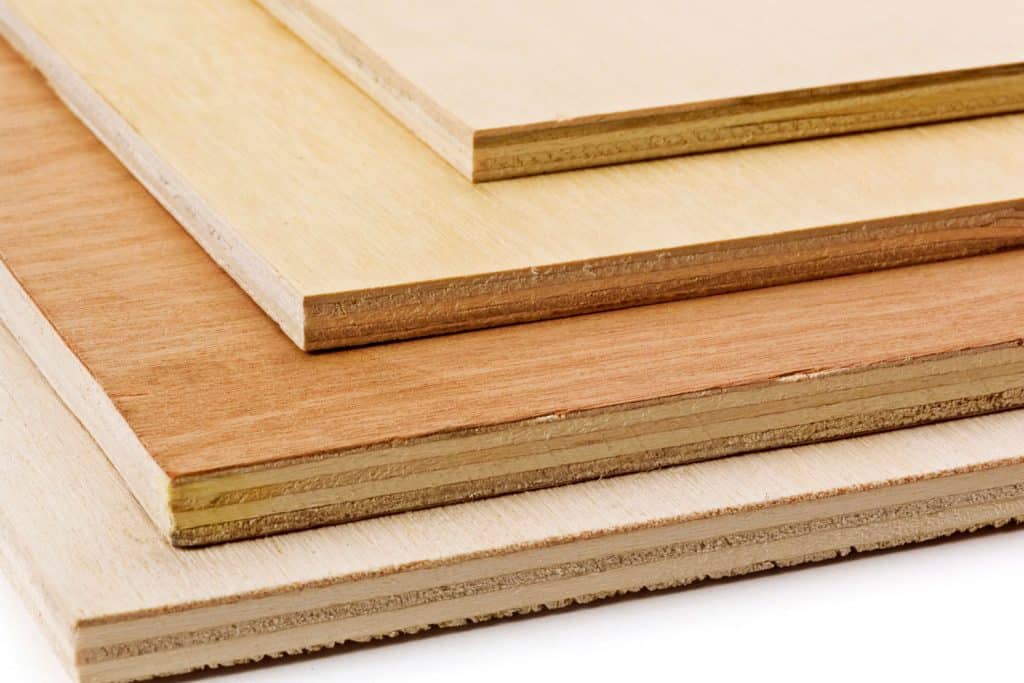
Although we have our recommendation above, the best plywood is often relative, which means that the ideal type of plywood depends on each person’s preferences and requirements.
Understanding the different properties of plywood, such as the classification and stain, will help interested buyers find their best option.
Plywood Classifications
Plywood can be divided into two classes:
- Exterior: Waterproof plywood panels meant for exterior use. These options are excellent for making front or back doors since these variants can withstand long-term exposure to harsh weather.
- Exposure 1: Normally used for subfloors and sheathing panels, Exposure 1 plywood can withstand humidity and moisture but only up to a certain degree. Plywood with this classification is better for interior use.
Stained Vs. Non-Stained Plywood
Buyers can purchase stained plywood to reduce the time to finish doors. But stained options may often hide imperfections, reducing the value brought by the doorway. Instead, it can be a better idea to buy non-stained plywood for doors.
Still, if you want to take advantage of stained plywood, different options are available such as the following:
- Oil-based stain: Known for its durable and deep penetration traits, an oil-based stain can help preserve the plywood’s finish for years. Linseed oil is a fairly common option in this regard, as this choice helps prevent various acids from penetrating deep into the wood.
- Water-based stain: Often contains water-soluble dyes to pass as colors. In turn, many water-based stains can act as thinners, which can ruin the paint on wood. However, these variants don’t usually have volatile compounds, making them eco-friendly choices.
- Gel stain: Excellent for hiding imperfections, many woodworkers choose gel stains because of their easy-to-apply properties. But this type of stain often has limited penetrating capabilities, creating longer-than-average drying periods.
- Lacquer wood stain: Many professional woodworkers choose this type of stain because of its fast-drying characteristics. Plus, lacquer stains often have relatively thin consistencies, making them excellent choices for penetrating plywood and other kinds of wood.
- Water-soluble dye stain: Originally comes in powdered form, water-soluble dye stains need distilled water before application. In turn, the plywood will have sufficient time to adapt to the stain, reducing the risks of warping or shrinking.
- Metalized dye stain: Also called know grain raising stains (NGRS), metalized dye stains have fast-evaporating solvents. But these ingredients usually dry faster than average, reducing room for error significantly. Its fast-drying characteristics might not be ideal for use for DIY beginners.
- Varnish wood stain: It increases the heat resistance of plywood. Also, varnish wood stains are fairly easy to maintain and generally produce an even color consistency across the plywood’s surface area.
You might also be looking at different materials to create specific types of doorways, such as storm doors. If so, check out this post to know your options: What Is The Best Material For Storm Doors?
Click here to see this cedar exterior wood stain and sealer on Amazon.
What Thickness Of Plywood Is Used For Doors?
![Carpenters assemble wooden profiles smeared with glue and prepare them for squeezing in the wood press machine at carpentry workshop. How To Stop Plywood Doors From Warping [A Complete Guide]](https://doordodo.com/wp-content/uploads/2021/09/Carpenters-assemble-wooden-profiles-smeared-with-glue-for-squeezing-in-the-wood-press-machine.-How-To-Stop-Plywood-Doors-From-Warping-1024x683.png)
Around 18-millimeter thick hardwood plywood is ideal to use for doors. However, the quality can depend on the veneer grade of each sheet to make the doorway. Plywood veneer grades are as follows:
- N: Heartwood or sapwood plywood that’s devoid of open defects.
- A: Paint-grade veneer ideal for reasonably less demanding applications.
- B: Solid veneer for tight knots and round repair plugs.
- C: Good for different applications, but often has several restrictions like tight knots can only have up to 1-1/2-inch in diameter.
- D: The lowest-grade veneer, which allows knots and knotholes up to 2-1/2 inches across the grain.
What Is The Highest Quality Plywood?
Grade A plywood, particularly the Grade A-1 model, is the ideal plywood to use in many woodworking projects. Take note that the costs for buying this high-quality wood can range from $115.10 to $200 per sheet. The costs can depend on the size of the plywood panel.
Despite the high prices, A-1 plywood panels generally have no gaps or voids. Plus, these models have flat, clean surfaces and have no visible patches. A-1 sheets also usually have consistent color and grain throughout their entire surface areas.
Can You Make A Door Jamb Out Of Plywood?
It’s possible to create a door jamb from plywood. But this material is only water-resistant and not waterproof. Using marine-grade plywood can help improve the functional lifespan of the material, but it can still be susceptible to significant moisture, such as the wetness from floods and heavy rains.
How Much Does A Plywood Door Cost?
The costs of plywood doors depend on certain factors, such as the material’s type and door design. Plywood prices can range from $5.97 to $35.97 for construction-grade panels and $13.27 to $44.97 for cabinet-grade sheets.
Buyers should also take note of the fee increase to create or purchase the door. For instance, hiring a professional to install or replace a door costs about $30 to $40 per hour.
Also, interested customers looking for a complete door should expect to spend money based on the door’s type. For example, a simple plywood interior door slab may have prices that range from $20 to $100. But a pocket door can cost about $400 to $1,000 depending on the materials and labor required.
Final Thoughts
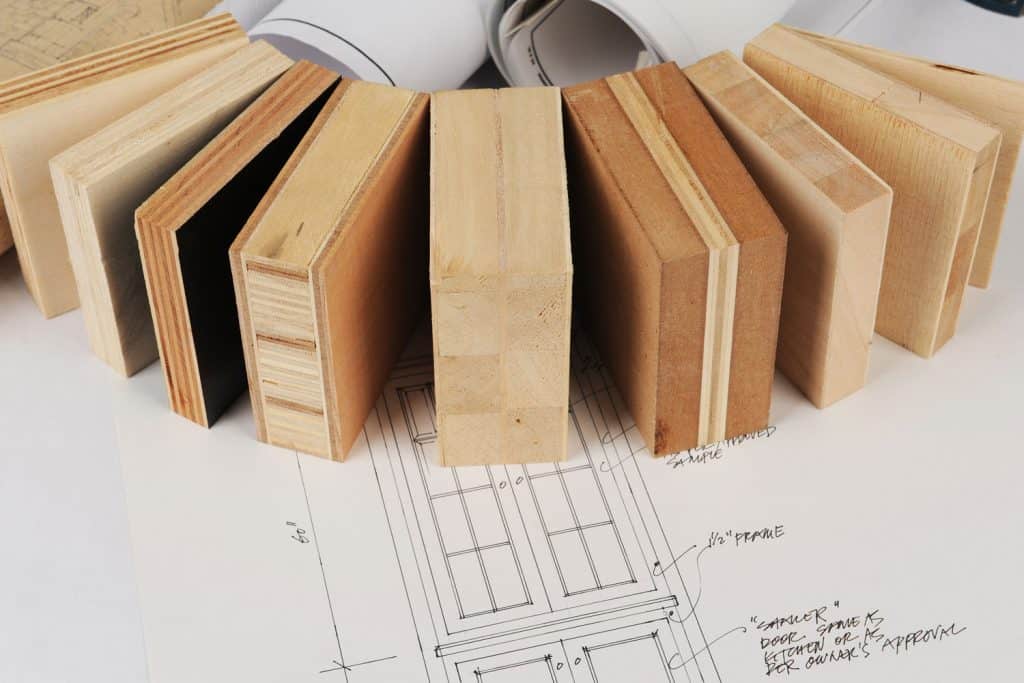
The best plywood for doors depends on user preferences and necessities. Knowing about plywood’s different features and traits can provide peace of mind to buyers.
For instance, some types of plywood are better for indoor use than exterior placements. On the other hand, some plywood variants can be better choices for exterior use, such as for front and back doorways.
Take note that plywood variations also differ in cost. The higher the plywood’s grade, the better the quality, but the cost will also be higher. Choose the correct option based on your tastes and requirements.



